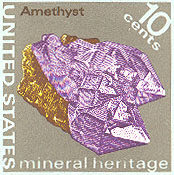
|
History of Geology |

Born: 20 March 1735, Katrineberg, Sweden.
Died: 8 July 1784, Medevi, Sweden.
| Abstract | Introduction |
| Major works | Scientific connections |
| Historical assessment | Related websites |

|
History of Geology |

Born: 20 March 1735, Katrineberg, Sweden.
Died: 8 July 1784, Medevi, Sweden.
| Abstract | Introduction |
| Major works | Scientific connections |
| Historical assessment | Related websites |
Bergman's major research was on the chemistry of metals, particularly nickel and bismuth. He also developed a mineral classification scheme based on chemical characteristics. His most important geological work is Physisk beskrifning ofvert jordklotet (Physical description of the Earth), published in Swedish in 1766. Subsequently translated into several languages, but not English, this work had considerable contemporary influence. With regard to the age and origin of rock strata, Bergman identified four major classes: uråldrige (primative), flolägrige (bedded), hopvräkta (swept-together), and vulkaner (volcanic). He also recognized the organic origin of fossils and appreciated the information they could supply about earth history. This work was an important step in the emergence of geology as a scientific discipline during the 18th century.
Physick Beskrifning was primarily a review and appraisal of the contemporary status
of geology, particularly stratigraphy. Few new observations or theories were presented. It
represents the threshold of geology emerging as a distinct scientific discipline. Bergman
reached the opinions (similar to Steno) that all rocks were deposited from fluid, that the
whole Earth had once been covered by water, and that different strata resulted from local
variations in water composition. With regard to the age and origin of strata, he defined
four rock classes.
Return to history of geology syllabus or schedule.Introduction
Bergman is best known as an analytical chemist, mineralogist and astronomer. He also
developed a classification of rocks that Werner made famous. Little is known about Bergman's
early life or family. He was educated at the University of Uppsala, where he was a student of
Linneaus, who devised the modern system of biological classification.
Bergman received a Ph.D. degree in 1758. He taught physics and mathematics as
a lecturer at the University of Uppsala for a few years, and in 1767 he was promoted to
professor of chemistry, a life-long position. He was known as a celebrated teacher and
is regarded as the "father of quantitative analysis."Major works
Bergman's major research involved the chemistry of metals—nickel and bismuth in particular.
He developed a classification of minerals in which main divisions are based on chemical
characteristics with subdivisions on external forms. This is quite similar to modern mineral
classsification, such as sulfides, oxides, silicates, etc. His work in geology is much less
known, but had considerable influence. Most important is Physick Beskrifning Ofver
Jordklotet (1766) or "Physical description of the Earth," which was published in Swedish
(not Latin). It was later translated into Danish, German and Russian, but not English.
Bergman recognized the importance of stratigraphy and correlation of rocks. He reviewed the
stratigraphy of southern Sweden that had been worked out by Linneaus. He also reviewed rock
stratigraphy from Germany, which emphasized the continuity of beds and sequences. Bergman
recognized the organic origin and importance of fossils.
Bergman took an ambivalent position regarding the bibical deluge. The effects of the deluge,
he thought, were wholly superficial, as no primitive or bedded rocks were originated or
modified. Some swept-together rocks and fossils might be attributed to the deluge, however,
he believed.Scientific connections
Bergman's ideas owe much to Linnaeus and Lehmann (German). Lehmann had earlier
referred to "Uranfängliche" and "Flötzgebirge" rock classes. Perhaps
these terms were common at the time. Lehmann, however, attributed Flötzgebirge
rocks to the deluge. There is no question that Werner's famous classification was
drawn from Bergman, although Werner later changed Uranfängliche Gebirge to
Urgebirge and added the transition class Ubergangs Gebirge. Early
geologic time scales.
Early
geologic time scales.Historical assessment
Werner freely acknowledged Bergman's work and lavished praise on the cool-blooded,
sharp-minded, great Bergman. Bergman is also thought to have had considerable
influence on the somewhat later work of James Hutton. Although little known today,
Physick Beskrifning was well known and widely distributed during the 18th
century. It represents an important step in the emergence of geology as a science. Related websites
Related websites

© J.S. Aber (2017).